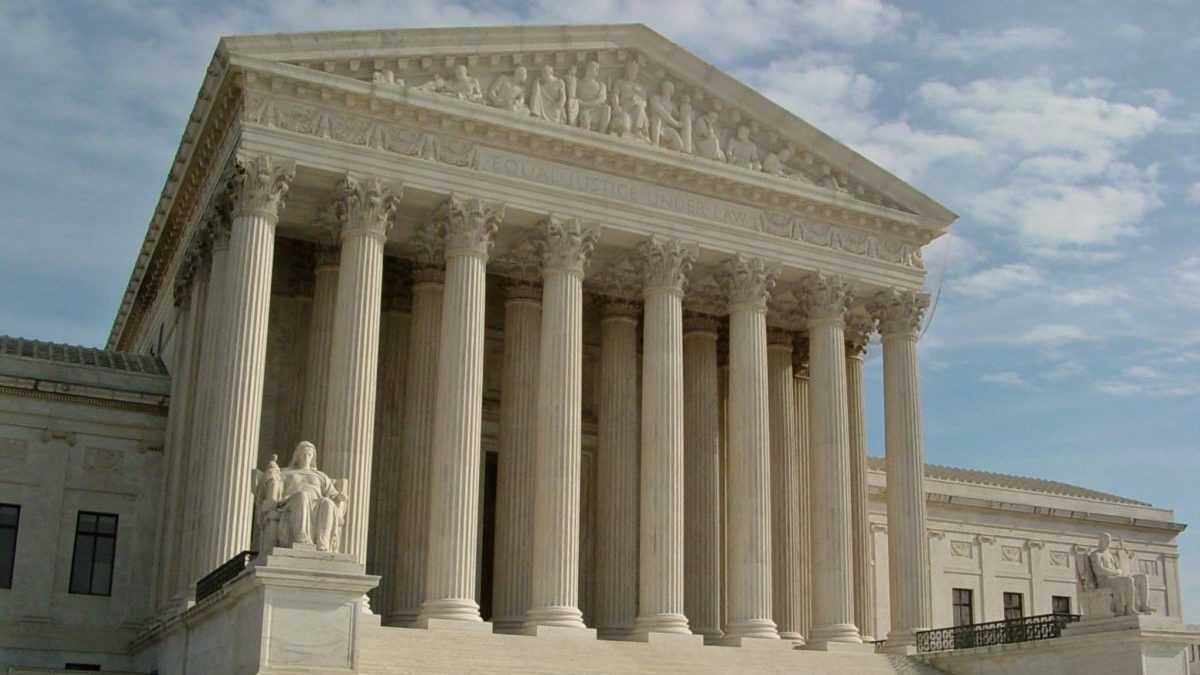In a 6-3 decision, the U.S. Supreme Court issued a ruling that limited state courts’ ability to wrest control of elections law from state legislatures in a North Carolina redistricting case. The ruling does not, however, entirely stymie activist attempts to use courts to override elected legislators’ decisions about election law.
In Tuesday’s Moore v. Harper decision, SCOTUS held that the U.S. Constitution’s elections clause “does not vest exclusive and independent authority in state legislatures to set the rules regarding federal elections.” But it also failed to defend state legislatures’ constitutional right to control elections law, including redistricting, as shielded from court review.
“For the first time, the Supreme Court has ruled definitively that there is a limit to the power of state courts to interpret election law,” said Jason Snead, executive director of the Honest Elections Project, in a statement. “Today’s ruling keeps alive the left-wing drive to abuse the courts for partisan gain, but it is no blank check for judges to embrace Marc Elias’ fringe and novel legal theories in order to skew the rules of democracy in favor of the Left.”
Chief Justice John Roberts wrote the majority opinion and was joined by Justices Brett Kavanaugh, Amy Coney Barrett, Elena Kagan, Sonia Sotomayor, and Ketanji Brown Jackson. Justices Clarence Thomas, Samuel Alito, and Neil Gorsuch dissented. Roberts wrote, “[S]tate courts do not have free rein,” even though legislatures are not exempt from “ordinary constraints imposed by state law.”
“State courts retain the authority to apply state constitutional restraints when legislatures act under the power conferred upon them by the Elections Clause,” Roberts wrote. “But federal courts must not abandon their own duty to exercise judicial review. In interpreting state law in this area, state courts may not so exceed the bounds of ordinary judicial review as to unconstitutionally intrude upon the role specifically reserved to state legislatures by Article I, Section 4, of the Federal Constitution.”
The court’s Tuesday ruling involves a case stemming from North Carolina, where the state Supreme Court threw out a congressional map drawn by the Republican-controlled legislature following the 2020 census. In its February 2022 ruling, the then-Democrat-majority Supreme Court claimed the map represented “an egregious and intentional partisan gerrymander.” The court also rejected the argument that the U.S. Constitution’s elections clause provides state legislatures the sole authority to draw congressional maps.
In response, the defendants filed an emergency application with SCOTUS and asked the nation’s highest court to issue a stay of the North Carolina Supreme Court decision. While the high court granted certiorari, it denied the defendants’ request for emergency relief. Following the 2022 midterms — which gave Republicans a majority on the North Carolina Supreme Court — the Tarheel State’s highest court agreed to rehear the case and, in April, overturned its previous decision.
While the North Carolina court concluded, as Roberts writes, “that partisan gerrymandering claims are justiciable under the North Carolina Constitution,” it did not “reinstate the 2021 congressional plans” that were originally struck down. Instead, it provided the General Assembly the power to enact a new set of “legislative and congressional redistricting plans.”
The U.S. Constitution, however, indicates that only state legislatures — not state courts — have the legitimate power to draw political district maps. Article I, Section 4 states that “[t]he Times, Places and Manner of holding Elections for Senators and Representatives, shall be prescribed in each State by the Legislature thereof; but the Congress may at any time by Law make or alter such Regulations, except as to the Places of chusing Senators.”
In essence, the court majority concluded the judiciary should oversee how state legislatures are allowed to exercise their constitutional duties to draw election maps.
“In sum, our precedents have long rejected the view that legislative action under the Elections Clause is purely federal in character, governed only by restraints found in the Federal Constitution,” Roberts wrote. “State courts retain the authority to apply state constitutional restraints when legislatures act under the power conferred upon them by the Elections Clause. But federal courts must not abandon their own duty to exercise judicial review.”
[RELATED: In Moore v. Harper, SCOTUS Could Decide Who Gets The Final Say In A 2024 Election Dispute]
In his dissent, Justice Thomas admonished the majority, arguing their ruling essentially acts as an advisory opinion. He said the “straightforward case of mootness” shows the suit should have been dismissed. He writes, “By its own lights, the majority ‘is acting not as an Article III court’ … but as an ad hoc branch of a state legislature. That is emphatically not our job.”
Thomas went on to further criticize the majority for adopting an unspecified standard when it considers state courts to be overstepping their legal bounds, writing that “the majority’s advice invites questions of the most far-reaching scope.”
“What are ‘the bounds of ordinary judicial review’? What methods of constitutional interpretation do they allow? Do those methods vary from State to State? And what about stare decisis—are federal courts to review state courts’ treatment of their own precedents for some sort of abuse of discretion?” Thomas writes. “The majority’s framework would seem to require answers to all of these questions and more.”
“I would hesitate long before committing the Federal Judiciary to this uncertain path,” he concluded.









